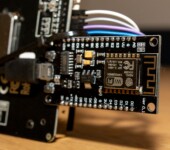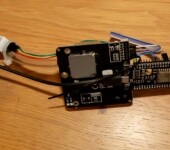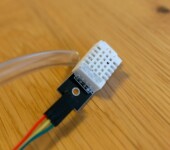The project "Luftdaten.info" collects particulate matter readings on the basis of private measuring stations operated by committed users. I have set up such a station on my balcony.
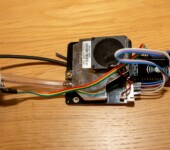
The individual parts can either be ordered via AliExpress with a corresponding waiting time (the individual deliveries are below the customs border and are delivered by the German Post) or ordered from Amazon for slightly higher prices.
It is based on an ESP8266 microcontroller, which can be addressed with the Arduino IDE and can be easily flashed: under Linux, all that is needed is to connect the controller with a micro-USB cable and enter the correct port in the flash command. In my case, the ESP8266 was available under /dev/ttyUSB0 to find.
After downloading the tools for the ESP8266 via the Arduino IDE (which is possible after adding "http://arduino.esp8266.com/stable/package_esp8266com_index.json" as additional board administrator URL in the settings and then a search for "esp8266" at "Tools -> Board... -> Board manager" is easy to handle), you can start the flash process.
The command for this is /dev/ttyUSB0 on the Linux port:
~/.arduino15/packages/esp8266/tools/esptool/0.4.13/esptool -vv -cd nodemcu -cb 57600 -ca 0x00000 -cp /dev/ttyUSB0 -cf ~/Downloads/latest_en.bin
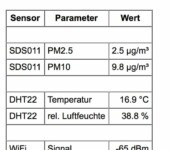
After successful flashing, you can start under http://192.168.4.1/ carry out the configuration and establish the connection to the home WLAN. Afterwards you can reach the sensor from the home network under http://feinstaubsensor-{Sensor-ID}.local/. There you can retrieve the live data of the sensors.
In addition, the services to which the measurement data are transmitted can be configured. By default, the data are transmitted to Luftdaten.info, but it is also useful to transmit them to the project openensemap.org. There, data from various sensors are collected, which not only pay attention to fine dust pollution, but also determine data such as air pressure or UV intensity. Access to the data itself is then open to the general public. Currently (as of 15.04.2018) 1,620 sensors are stored in the database.
My measuring station is of course also on OpenSenseMap.org deposited. Unfortunately, there is no easy way to operate the sensor with a solar cell, so I use a socket that fortunately exists on my balcony. If I find a way to use the sensor without a USB power supply, I will update this article.
Data for own use & the Community
For approximately 30,- Euro and a little bit of time, one gets a practical measuring station that can record the air humidity, temperature as also fine dust in two sizes (PM2.5 and PM10, 2,5 µm and/or 10 µm particle size). With the respective sensor, air pressure is also added.
If you feel inspired now and want to set up a sensor station yourself, you can also order the parts conveniently from Amazon - but the delivery times are not really better than via AliExpress with free shipping. In any case, the data should then also be made available to the mentioned projects.
[amazon box=“B07911ZY9W,B07WFB24WD,B074Q2WM1Y“ template=“list“]
